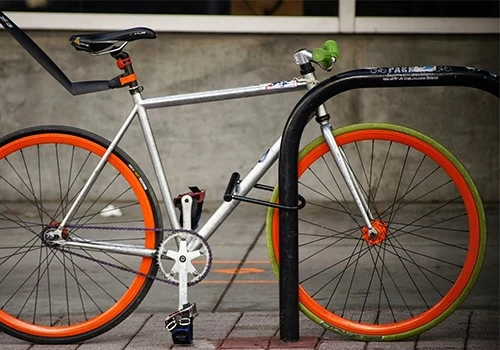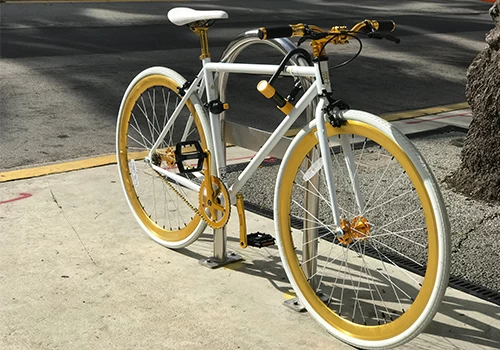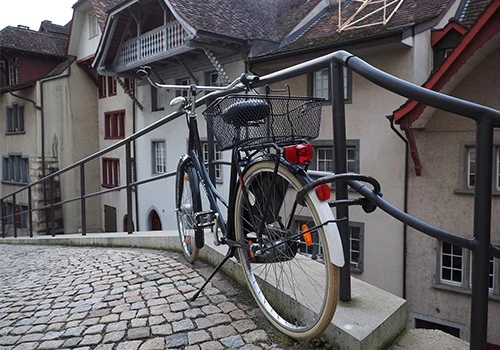Specifications
Model Number : PV-SC-001
Type: Bike parking and storage
Color:Yellow,Black,Green,Red,or Customized.
Style : both indoors and outside
Material : carbon steel
Loading: According to customer need
Size :195*23.2*75cm,200.55*23.2*75cm,or Customized.
Finish: hot-galvanized
Specifications
Model Number : PV-0081-01
Type: Bike parking and storage
Color:silver
Style : both indoors and outside
Material : carbon steel
Loading: According to customer need
Size :Height 1463mm, Depth 1114mm
Finish: hot-galvanized
Model Number : PV-0081-01
Type: Bike parking and storage
Color:Black
Style : both indoors and outside
Material : carbon steel
Loading: 2-10 bikes (According to customer need)
Size :Height 1463mm, Depth 1114mm
Finish: hot-galvanized
Model No.: PV-H1
Size: w605*D400*H330mm
Specification: Round tube:¢16*1.2mm
Finish: Power coated
Net Weight: 1.6 kgs
Packing size:6pcs/ctn
MOQ: 100pcs
Model Number : PV-0024-01
Material : carbon steel/stainless steel
Loading: according customer space size,we can design according the size
Size : W1977*D1130(depend on your parking space)*H2500mm
Finish: Powder coated ,hot-galvanized/electric polish
Packing size :2000*2000*2500mm(40 parking space )
Powder coated ,hot-galvanized/electric polish
Product number:PV-0046-01
Material:carbon steel
Specification:10.2*59*28CM or Customized.
MOQ:100PCS
Port:Shanghai
Trademark:PV
Model Number : PV-0081-01
Type: Outdoor Bike Parking Rack
Style : both indoors and outside
Material : carbon steel
Loading: 2-10 bikes (According to customer need)
Size :170.5*116*148CM
Finish: hot-galvanized
Model Number : PV-0055-01
Type: compact flat pack /slot
Color:black / silver /yellow/optional
Style :Outdoor/indoor
Material : carbon steel/ stainless steel
Capacity : park 6 bikes
Size : L1400*W1054*H840mm
Net weight :38KG
Finish: powder coating / hot galvanized /elctropolishing
Packing size :1490*860*160mm 1pcs/ctn
Product Name: Multi-Capacity Horizontal Two Tier Bike Parking Rack
Material: Carbon Steel
Finish: Powder coated
Post: 80mm * 80mm thickness: 3mm
Steel plate: thickness: 2mm
Dimension: 1325*1890*1830mm
Weight: 370 kg/set
Model: PV-0067-01
Material: stainless steel 304
Pipe: 50 mm* 2.5 mm
Size: 900*700 mm(L*W)
Surface treatment: polishing

Creating accessible, inclusive environments is essential in today's urban planning, and cycle rack design is no exception. The Americans with Disabilities Act (ADA), passed in 1990, ensures that people with disabilities have equal access to public spaces and services. While the focus of ADA compliance often revolves around parking lots, sidewalks, and building entrances, it is equally important that bike parking solutions are designed with accessibility in mind. Ensuring that bike racks are ADA-compliant not only promotes inclusivity but also demonstrates a commitment to providing equitable access for all members of the community.
ADA compliance in cycle rack design means creating solutions that accommodate individuals with varying abilities, including those who may use mobility devices such as wheelchairs or scooters. To be truly inclusive, bike racks must be easy to access, located in appropriate areas, and spaced properly to allow for comfortable maneuverability. A key aspect of ADA compliance is ensuring that bike racks are situated in places that do not impede pedestrian pathways or obstruct access to building entrances, ramps, or elevators. It’s also crucial that the racks themselves are easy to use, with considerations for height, ease of locking, and accessibility for individuals with limited mobility.
In terms of specific guidelines, ADA-compliant bike racks must be installed at a certain height to ensure they are reachable for individuals who may have difficulty bending or stretching. The spacing around the racks is equally critical; a minimum of 36 inches of clear space should be provided on all sides to allow for easy access, including for individuals using wheelchairs. Additionally, the placement of bike racks should consider proximity to accessible pathways, ensuring that individuals with disabilities do not have to navigate long distances or uneven surfaces to park their bikes. These seemingly small design choices can make a significant difference in ensuring that bike parking facilities are accessible to everyone.
The inclusion of ADA-compliant cycle racks benefits not only individuals with disabilities but also the broader community. For businesses, ensuring that their bike parking is accessible can attract a more diverse range of customers and employees. As cities continue to promote sustainable transportation options like cycling, the demand for accessible bike parking is growing. Providing accessible bike racks signals that a business values inclusivity and is committed to meeting the needs of all cyclists, regardless of their physical abilities. This inclusivity can enhance a company’s public image, contributing to a reputation for social responsibility and community support.
On a larger scale, communities that prioritize ADA-compliant bike racks contribute to the overall goal of creating inclusive public spaces. Accessible bike parking can encourage more people to take up cycling as a mode of transportation, knowing that they will be able to park their bikes in a safe, accessible location. This not only supports sustainability efforts but also promotes public health by making active transportation more viable for a broader population. Moreover, ensuring that bike racks meet ADA standards helps municipalities avoid potential legal issues related to accessibility complaints, further reinforcing the importance of compliance in public infrastructure projects.

While the benefits of ADA-compliant bike racks are clear, implementing these solutions can present certain challenges. One of the primary obstacles is the misconception that making bike racks accessible requires significant additional space or investment. In reality, many existing bike racks can be retrofitted to meet ADA standards with relatively minor adjustments, such as repositioning racks to allow for more clearance or installing additional signage to direct individuals to accessible parking areas. Moreover, new bike rack designs that prioritize accessibility are becoming more readily available, offering a range of options for businesses and cities to choose from.
Another challenge lies in educating businesses, architects, and city planners about the importance of ADA compliance in bike rack design. Many stakeholders may not be aware of the specific requirements that must be met to ensure accessibility, particularly when it comes to integrating bike racks into complex urban environments. However, this challenge also presents an opportunity for manufacturers and designers to play a key role in promoting accessible solutions. By providing clear information about ADA standards and offering design options that prioritize inclusivity, bike rack manufacturers can lead the way in creating more accessible urban spaces.
As cities continue to evolve and place greater emphasis on cycling infrastructure, the need for ADA-compliant bike parking will only grow. Future bike rack designs will likely incorporate not only accessibility features but also smart technology to further enhance the user experience. For instance, bike racks equipped with digital features such as touchless locking mechanisms or real-time parking availability updates could make parking even more convenient for individuals with disabilities. Additionally, partnerships between city governments, businesses, and advocacy groups for people with disabilities will be essential in ensuring that bike parking solutions meet the needs of all users.

ADA compliance in cycle rack design is not just a legal requirement—it is a crucial step toward building inclusive, equitable public spaces. By considering the needs of individuals with disabilities, cities, businesses, and designers can create bike parking solutions that are accessible to all, promoting cycling as a viable transportation option for everyone. As the demand for bike-friendly infrastructure continues to rise, ensuring that bike racks are ADA-compliant will be a critical component of sustainable, inclusive urban development.